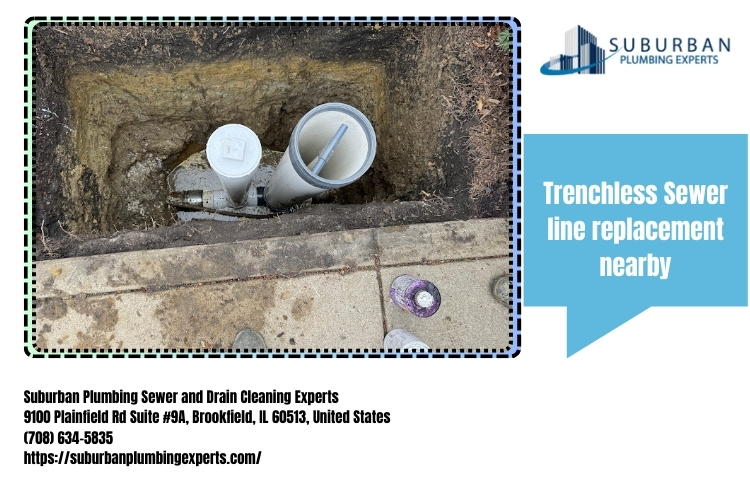Sump pumps are vital components in managing water accumulation, especially in areas prone to flooding. Choosing the right sump pump can be a daunting task with various types available on the market. This comprehensive guide will delve into the different types of sump pumps, helping you determine which one best suits your needs.
Understanding the Different Types of Sump Pumps: Which One is Right for You?
When it comes to protecting your home from potential water damage, understanding the different types of sump pumps is crucial. Each type serves a specific purpose and comes with its unique features. Hence, knowing what each type offers can empower you to make an informed decision that can save you both time and money in the long run.
What is a Sump Pump?
A sump pump is a device installed in the lowest part of a basement or sump pump replacement near me company https://www.suburbanplumbingexperts.com/?utm_campaign=gmb crawlspace to prevent flooding and water accumulation. It works by collecting excess water and pumping it away from your home, thus safeguarding your property from moisture-related issues like mold and structural damage.
Why Do You Need a Sump Pump?
Flooding can occur due to heavy rains, melting snow, or even plumbing leaks. A sump pump acts as your first line of defense against these threats. It helps maintain dry conditions within your home, preventing not only water damage but also health risks associated with mold growth.
Types of Sump Pumps
There are primarily two types of sump pumps: pedestal and submersible. However, within these categories, there exist several variations based on power source and design.
1. Pedestal Sump Pumps
Pedestal sump pumps feature a motor that sits above the sump pit, making them easy to access for maintenance and repairs.
Benefits of Pedestal Sump Pumps
- Easy Maintenance: With the motor above ground, accessing components for cleaning or replacement is straightforward. Cost-effective: Generally less expensive than submersible models. Longevity: Less likely to overheat due to being positioned above water.
Drawbacks of Pedestal Sump Pumps
- Noise Levels: These models tend to operate noisily since the motor is exposed. Limited Depth: They may not be suitable for deeper pits where water accumulates significantly.
2. Submersible Sump Pumps
Submersible sump pumps have their motors enclosed in a waterproof casing and are submerged underwater when operating.
Benefits of Submersible Sump Pumps
- Quiet Operation: Being submerged keeps noise levels down. Greater Efficiency: Typically more efficient at expelling large volumes of water quickly. Space-Saving Design: Takes up less space compared to pedestal models.
Drawbacks of Submersible Sump Pumps
- Difficult Maintenance: Accessing components for repairs can be cumbersome since they are submerged. Higher Cost: Generally more expensive than pedestal options due to their advanced design.
Battery Backup vs. Primary Power Source
When choosing between different types of sump pumps, consider whether you want a battery backup system or rely solely on primary power sources such as electricity.
Battery Backup Systems
These systems provide peace of mind by ensuring that your pump continues working during power outages—a common occurrence during severe storms.
Primary Power Source Systems
Most traditional sump pumps operate on standard electricity; however, they may fail during power outages unless paired with backup systems.
Selecting Your Perfect Fit: Key Considerations
Choosing the right sump pump involves evaluating several factors:

Common Features to Look For
Regardless of which type you choose, certain features can enhance functionality:
- Automatic Float Switch: This feature allows for hands-free operation by activating when water reaches a certain level. Alarm System: Alerts homeowners when water levels rise unexpectedly or if there's an issue with pump operation. Check Valve: Prevents backflow into the sump pit after pumping has occurred—essential for efficiency.
Installing Your Sump Pump: Professional vs DIY
Once you've chosen which type fits best within your specific context, it's time to consider installation methods:
1. Hiring Professionals
Opting for professional installation ensures that all aspects—such as proper placement and securing connections—are handled correctly by experienced contractors like Suburban Plumbing Sewer and Drain Cleaning Experts.
2. DIY Installation
For those comfortable with tools and plumbing basics, DIY installation may save costs but requires diligent attention to detail.
" width="560" height="315" frameborder="0" allowfullscreen>
Contact Us
If you're looking for expert guidance regarding installation or replacement services, don't hesitate to reach out!
Contact Us
Suburban Plumbing Sewer and Drain Cleaning Experts
Address: 9100 Plainfield Rd Suite #9A, Brookfield, IL 60513, United States
Phone: (708) 634-5835
FAQ Section
Q1: How often should I check my sump pump?
It's advisable to check your sump pump at least once every three months.
Q2: Can I install a sump pump myself?
" width="560" height="315" frameborder="0" allowfullscreen>
Yes, but ensure you follow all guidelines carefully; otherwise, consult professionals.
Q3: What maintenance does my sump pump require?
Regularly clean out debris from around the intake screen and test it periodically.
Q4: How long do sump pumps last?
With proper care, most last about 5–10 years.
Q5: What should I do if my pump fails?
Immediately contact professionals who specialize in sump pump replacement services.
" width="560" height="315" frameborder="0" allowfullscreen>
Q6: Are there energy-efficient models available?
Yes! Many manufacturers offer energy-efficient models designed to reduce electricity usage while maintaining performance.
Conclusion
Understanding the different types of sump pumps is essential for making an informed choice tailored specifically to your home's needs. Whether you opt for a pedestal model or prefer submersible designs equipped with backup systems—considering factors like volume capacity and ease-of-access will help maximize efficiency while minimizing potential hazards posed by excess moisture in residential spaces.

For assistance in selecting or replacing your existing unit, remember that expert help is just around the corner through dedicated companies like Suburban Plumbing Sewer and Drain Cleaning Experts. Their experience will ensure you have peace of mind knowing you've made an investment worth protecting against future flooding concerns!
This article provides detailed insights into various kinds of sump pumps suitable for different environments while emphasizing professional services available in Brookfield IL!